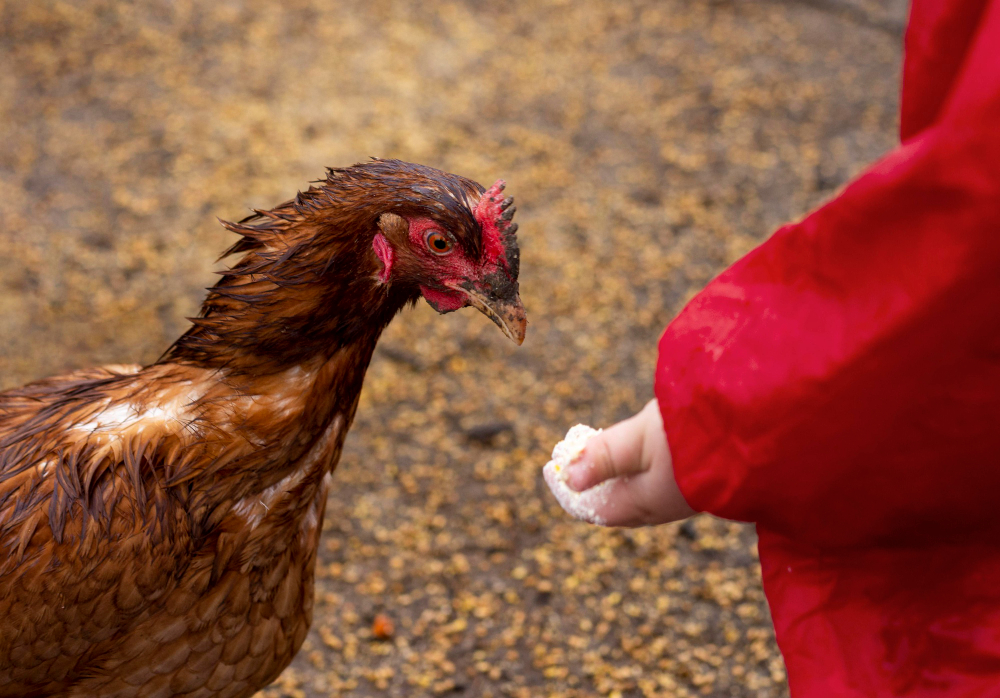As more people turn to sustainable living and backyard farming, the topic of humane poultry processing has become increasingly important. Knowing how to ethically and safely process a chicken is not only a matter of animal welfare, but also food quality and personal responsibility.
This guide explores the most humane way to kill a chicken — focusing on safe, ethical, and legal standards — while promoting respect for the animal and compliance with national and local regulations.
Understanding Humane Slaughter
Humane slaughter is a practice that minimizes pain, fear, and distress during the animal’s final moments. According to animal welfare organizations such as the Humane Slaughter Association (HSA) and USDA guidelines, humane killing methods should:
- Render the bird insensible to pain instantly.
- Prevent unnecessary suffering or fear.
- Comply with all local, state, and federal animal welfare regulations.
The goal is not only ethical treatment but also ensuring food safety, as a stressed or mistreated bird produces lower-quality meat.
The Importance of Ethics in Poultry Processing
Ethics play a crucial role in how humans interact with animals. Humane processing reflects a respectful, compassionate approach to animal husbandry.
Key ethical principles include:
- Gratitude and respect for the animal’s life.
- Minimal stress during handling and preparation.
- Proper training for anyone involved in slaughter.
- Transparency and accountability in farming practices.
For small-scale farmers or homesteaders, following ethical standards helps maintain consumer trust and aligns with the growing demand for ethically raised meat.
Legal Standards for Humane Poultry Processing
In the United States, poultry slaughter is regulated by the Poultry Products Inspection Act (PPIA) and overseen by the U.S. Department of Agriculture (USDA) and Food Safety and Inspection Service (FSIS).
While the federal Humane Methods of Slaughter Act (HMSA) does not specifically cover poultry, the USDA mandates that birds be handled humanely to prevent unnecessary suffering.
Key Legal Requirements:
- Birds must be unconscious before bleeding (in commercial settings).
- Proper equipment must be used to prevent distress.
- Clean, sanitary facilities must be maintained to ensure food safety.
- Local or state-level agricultural departments may have additional animal welfare regulations.
Always consult your local animal welfare authority before performing any poultry processing.
Reducing Stress Before Slaughter
Stress has a direct impact on both animal welfare and meat quality. High-stress levels before slaughter can lead to poor bleed-out, tough meat, and unethical treatment.
To reduce stress:
- Handle chickens calmly and gently.
- Avoid loud noises, fast movements, and bright lights.
- Keep birds separated from the killing area until it’s time.
- Limit the number of birds handled at one time.
The calmer the animal, the more humane and ethical the process.
Approved Humane Methods
While specific details of killing methods cannot be described here, humane and legal methods follow one principle: the bird must be rendered immediately unconscious and insensible to pain before death.
Common Humane Approaches (Ethical Overview):
- Stunning before slaughter: Electric or controlled-atmosphere stunning is commonly used in licensed facilities to ensure insensibility before bleeding.
- Certified humane processing systems: Farms certified by organizations like Certified Humane® or Animal Welfare Approved (AWA) must follow strict humane protocols.
- Veterinary oversight: Consulting with a licensed veterinarian ensures compliance with ethical and scientific standards.
These methods are widely regarded as the most humane because they eliminate pain perception instantly.
The Role of Proper Equipment and Training
Using the correct equipment and being trained in humane handling techniques are essential parts of ethical poultry processing.
- Training ensures that the handler understands animal behavior, welfare standards, and safety protocols.
- Equipment (such as stunning tools, cones, and restraint systems) must be clean, well-maintained, and approved for humane use.
- Inspection and sanitation after each use are mandatory to prevent contamination and disease spread.
Without proper equipment and knowledge, even well-intentioned efforts can result in suffering — which is both unethical and illegal.
Small-Scale and Backyard Poultry Ethics
Backyard chicken keepers often face the moral dilemma of how to responsibly process older or non-laying hens. In small-scale settings, the focus should always be on compassion, calm handling, and respectful care.
Ethical small-scale practices include:
- Seeking professional guidance or training from agricultural extensions.
- Choosing licensed mobile processors when possible.
- Ensuring cleanliness and safety during all stages of processing.
- Following local and state regulations for on-farm slaughter.
Backyard farmers can demonstrate that humane treatment is possible outside of industrial systems.
Religious and Cultural Considerations
Certain religious traditions have their own guidelines for humane slaughter. For instance:
- Halal and Kosher practices require animals to be treated gently, with minimal suffering, and handled with respect.
- In all faith-based systems, the focus is on intentionality, cleanliness, and reverence for the animal’s life.
Modern interpretations of these traditions often integrate stunning or certified humane methods to ensure both compliance with faith and animal welfare standards.
Environmental and Ethical Impacts
Choosing humane slaughter methods is not just about the animal; it’s part of a larger ethical ecosystem. Humane poultry processing supports:
- Sustainable agriculture by reducing waste and cruelty.
- Consumer trust through transparent practices.
- Environmental stewardship, since ethical farms often minimize pollution and use resources responsibly.
Consumers are increasingly choosing meat from sources that demonstrate responsibility, respect, and care for animals and the planet.
Education and Continuous Improvement
The field of animal welfare is constantly evolving. Farmers, processors, and consumers alike can contribute to humane standards by staying informed.
Ways to stay updated include:
- Attending USDA or university agricultural workshops.
- Following animal welfare organizations like the ASPCA or Humane Society.
- Completing Certified Humane® or AWA training courses.
- Reviewing updated regulations and scientific research.
Continuous education ensures that humane practices remain aligned with science, ethics, and community expectations.
Conclusion
Killing an animal for food is a profound responsibility that demands compassion, care, and respect. The most humane way to kill a chicken is not defined by a single act, but by a commitment to minimizing suffering, following the law, and honoring the life taken.
By prioritizing humane, ethical, and legal standards, farmers and consumers can support a food system that values both animal welfare and human integrity.
FAQs
1. Is it legal to kill a chicken at home?
Yes, in many areas it’s legal to process your own poultry for personal use, but you must follow local regulations and ensure the method used is humane and sanitary. Always check your state’s Department of Agriculture guidelines.
2. What is the most humane way to kill a chicken according to law?
Legally approved humane methods render the bird instantly unconscious before death. Commercial facilities typically use electrical or gas stunning, both overseen by USDA inspectors.
3. Why is reducing stress important in slaughter?
Stress causes suffering and negatively affects meat quality. Calm handling ensures both ethical treatment and better food outcomes.
4. Are there humane certification programs?
Yes. Programs like Certified Humane®, Animal Welfare Approved (AWA), and Global Animal Partnership (GAP) certify farms that meet strict humane slaughter and animal welfare standards.
5. How can small farmers ensure ethical slaughter?
Small farmers can use licensed mobile processing units, attend humane handling workshops, and maintain clean, quiet environments to minimize animal distress.
Also read: Daily Greens Austin – Fresh, Organic Juices & Plant-Based Goodness




Leave a Comment